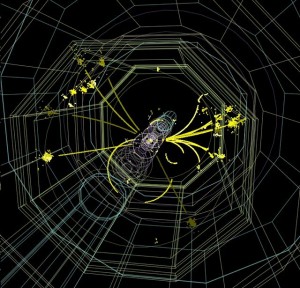Since the big news of the discovery of Higgs-like particle at LHC, we have been talking about it with enthusiasm a lot and at various occasions. I’m sure every particle physicist has been asked questions from families, friends or neighbours what the discovery means. The news stimulated big excitement about the Higgs particle in the media as the many TV programmes and press articles indicate. It is wonderful that people know what particle physicists are questing for and how we do it. The excitement should be shared with many people who supported this success through paying their taxes.
The discovery gave us, the ILC physics and detector community, solid ground to plan for the next actions both in the short term and longer term. The immediate one is that we must keep our schedule to complete the Detailed Baseline Design (DBD) report. This is straightforward as well as important. The report is a summary of our R&D studies during the Letter-of-Intent (LOI) period since 2007. The report will become a key document together with the accelerator’s Technical Design Report to propose the ILC. It is crucial that our DBD is completed at the same time as the properties of the new Higgs(-like) particle are better determined. When the HEP community considers the longer-term programme based on the discovery, our documents can be good materials to take into account. During the last meeting of International Linear Collider Steering Committee, the chair, Jon Bagger, was very clear that we must complete it as scheduled.
We are proceeding to keep this target. Already early this year several milestone dates were agreed with the detector groups on how to complete the detector and simulation volume. The first milestone was that the outlines of the content were monitored by International Detector Advisory Group (IDAG) last April. The groups are working hard now to complete their drafts by 21 September. A complete set of the draft will be reviewed by IDAG in October during the LCWS12 in Arlington, USA. The other volume of the DBD, the physics volume of the detailed physics case for the ILC, is about to be completed now so that it can be referred to in the European strategy discussions in September. Following the development of LHC experiments, this volume may be updated through the end of the year.
Knowing the mass of the Higgs-like particle helps us decide where to set the ILC energy to study the new world. The discovery excites us not only because it may fill the last hole of the particle chart of the Standard Model but because of this possibility. The Higgs particle is totally different from other members and opens the door to the next development. The mass tells where the door is. The Standard Model of particle physics describes almost all of the existing observations comprehensively. If the last hole is filled, the Model would be complete. This would be a great accomplishment. However, we also know that the Standard Model is not perfect because there are a few but very important questions it can’t answer. For instance, there is no room for dark matter, which dominates the universe over the known matter that makes up stars, planets and galaxies. The mass spectrum of the elementary particles can’t be explained either. It can be interpreted as the coupling to the Higgs particle but without further explanation on the observed structure provided. Therefore, theorists are proposing various ideas for beyond the Standard Model to solve remaining questions and to understand Nature deeper. The precise investigation of the Higgs-like particle is a promising approach to find the correct idea. Experiments at the ILC are designed to pursue such investigations. While they begin with the identification of the new particle to tell whether it is really the Higgs particle of the Standard Model, they mark the beginning of richer programmes possibly by observing some deviations or even other new particles expected in the ideas beyond the Standard Model.
High precision measurements can give a clue for the higher-energy phenomenon with the help of theoretical considerations. A good example is the prediction of the Higgs particle mass. From the precise data of the W and Z bosons and the top quark, accumulated with the previous colliders, the most likely mass of the Standard-Model Higgs particle was estimated to be around 120 GeV. This number was used in many simulations of our R&D studies. Now the observed mass of the candidate shows that the estimation is right. This demonstrates the capability of the theoretical analyses. Similarly, the precise measurements of the Higgs particle itself will enable us to survey the higher energy world and to find which model to take.
The ILC is the best facility for these studies and we have been preparing to demonstrate it. Now we know that we are standing in front of the door to a new world and this is why we are so excited.



Recent Comments